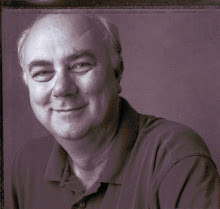The 1918 Spanish Flu Had a Silver Lining for Kingsport: the Creation of a Hospital
It’s called the 1918 flu but it lasted well into 1920. That early
twentieth century pandemic – also called the Spanish flu - may have killed as
many as 50 million people worldwide and infected 500 million, one third of the
world’s population at the time.
In 1918 Kingsport may have been small – the population didn’t top 5,000
until 1920 - and remote but it was still affected by the Spanish flu.
In fact something good came out of the pandemic: Kingsport’s hospital.
In the early years of the twentieth century, Kingsport had no need of a
hospital. It didn’t have that many people.
The 1910 census listed Kingsport’s population as 250.
On January 1, 1915 it was estimated there were 900 people living in the
city.
Then came incorporation and industrialization and the city’s population
boomed. The 1920 census said it was 5,692. Two months later a health department
survey reported 7,000 living in the city. And that number didn’t include what
the newspaper called “Kingsport’s most flourishing suburbs.” Old Kingsport had
a thousand residents. Another 500 were living in West View Park. Even Highland
Park, which was just being built, already had 300 people. Add in Gibsontown
(200) and a few other suburbs and the newspaper said the town probably had
10,000 residents. From 250 to 10,000 in ten years. The city was behind on a lot
of public service facilities.
But not a hospital. The flu insured that.
We don’t know exactly how hard Kingsport was hit by the first wave of
the Spanish flu because the newspaper records for 1918 no longer exist.
But from a Nov. 14, 1919 story we learn that “Kingsport's Community
Hospital…was founded by the city Oct. 11, 1918, to provide greater facilities
for checking influenza here. …The Board of Mayor and Aldermen established the
Community Hospital after citizens assembled in a mass-meeting petitioned that
body to provide means for the treatment of persons suffering from influenza.
The hospital for several months after its establishment was filled with ‘flu’
patients, nearly all of whom, it is thought, owe their lives to the treatment
received therein.”
(There had been a small hospital at 121 East Charlemont run by Dr. Yopp
but it couldn’t handle the large number of flu cases.)
That eight-bed facility, which was run by the city, was located on the
second floor of the Hicks Building on the corner of Broad and Market (the
building is still there; it’s directly across Broad from the State Theater).
The city ran it for a year and then sold it to Drs. Edwards and Tipton
for $1,800 with the agreement that they would accept charity cases. The city
had been operating the facility at a loss of about $300 a month. (A month later
it was sold again to a group of 9 doctors that included Dr. Tipton.)
We know from newspaper reports that the flu was still raging after that
Nov. 1919 sale of the hospital.
Every issue of the paper had more cases to report.
T.R. Bandy came down with the flu Oct. 14, 1919. Three weeks later
“Mrs. Jake Shoun has been confined to her home on Wanola with influenza.”
The paper reported the city had suffered 155 cases of influenza during
February 1920.
Soon the flu report read like a who’s who of Kingsport:
Mrs. Jimmy Hamlett, Mrs. Glenn Bruce and “little son,” “Marshall
Doggett, who has been ill with influenza, is convalescent at the home of his
uncle J. Fred Johnson,” William Roller Jr., Mrs. Ben Dobyns and “little
daughter.”
It attacked entire families. The March 7, 1920 report from Kendricks
Creek noted that Joe Dragg and his son had died of influenza.
March 8, 1920: Bloomingdale. “Influenza is sweeping this section.
School has been suspended until the epidemic has subsided.”
That same day: “Mrs. Annie May Lampkin died at her home on Holston
Heights after an illness of six days….William Smith, 16, of Indian Springs died
after his influenza developed into pneumonia.”
It continued into April. But the last flu report in the paper was April
23, Mrs. W.W. Hufford.
And then it was over.
The epidemic had passed.
I can’t find a summary of deaths in Kingsport but it must have been in
the hundreds.
There were some success stories. On March 5, 1920 little Robert Pyle
Jr. was gravely ill, his influenza having progressed into pneumonia and then
spinal meningitis, according to the newspaper. “Although four physicians are in
attendance, no hope is entertained of his recovery.”
But recover he did and he was able to write Santa a letter in December
asking for “a kiddekar, a ball, a toy horse, and some bedroom slippers and a
bathrobe.”



0 Comments:
Post a Comment
<< Home